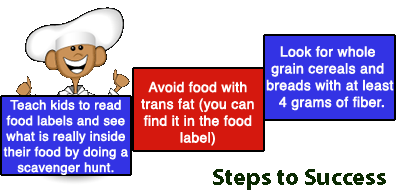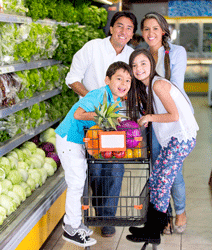No More Drama at the Grocery Store!
Noora Mousa • Registered Dietitian Nutritionist, RDN • Jun 12, 2014

Begging, shouting, and screaming kids at a grocery store for a candy bar or a box of sugary cereal can be every parent’s nightmare! Children become familiar with food and beverage products at an early age, because the food and beverage industry spends about $2 billion per year in marketing and advertisements geared towards children. Children watch an average of ten food-related ads every day, so no wonder why they are very familiar with these products! Not to mention, these advertised foods and beverages are high in calories, sugar, fat, and sodium.
Grocery stores sell thousands of food products and many of which can be very tempting, especially for kids! Notice when you go grocery shopping, you will find many sugary and unhealthy food items placed conveniently at kid’s eye level with colorful packages and popular cartoon characters.
Grocery Shopping Tips When Shopping With Kids
Yes, I know grocery shopping with your child can be difficult at times, but it doesn’t have to be full of drama! Take this opportunity to teach your child about the variety of colorful fruits, vegetables, and other delicious healthy foods! Here is a guide on how to survive grocery shopping with your child:
-
Be Prepared: Planning ahead of time and writing a list of food items you will need can make your trip to the grocery store fast and smooth. You will be spending less time wandering around and potentially purchasing unhealthy foods.

-
Don’t Shop on an Empty Stomach: If you shop on an empty stomach, you are most likely going to purchase more groceries than you have planned because you are feeling hungry! So, don’t leave the house without eating a healthy and filling snack or meal, and of course make sure your child eats too!
-
Focus on the Store's Perimeters: The outer aisles contain healthier food options such as fresh fruits, vegetables, dairy products, fresh meat, and fish. The inner aisles usually have snacks and processed foods. Therefore, it is best to focus on the store’s perimeters and try to spend less time in the inner aisles with foods high in calories, sugar, fat, and sodium.
-
Play a Game: It can be fun to engage your child in a fun and educational game while grocery shopping to distract him/her from asking and begging for unhealthy foods.
-
Guess the weight: Ask your child to guess the weight of fruits and vegetables you want to purchase and then put the item (s) on the scale and see how close your child is. It’s a fun game that will teach your child about measurements and numbers.
-
Food Group Detective: Teach your child about food groups by helping him/her identify different food items and match them to the right food group. Examples: Apples-Fruits, Cereal-Grains, Beans-Protein, Milk-Dairy, Broccoli-Vegetables.
Why does it Matter?
Every food item you purchase at the grocery store impacts what you and your family will eat throughout the week. It’s important to focus on purchasing nutrient-packed foods such as fruits, vegetables, milk, lean protein, and whole grains, and try to limit foods that are high sugar, fat, and sodium. Healthy food and beverage choices are important for a good healthy growth!
Healthy Eating

Healthy Child

Written by Noora Mousa
•
Written on Jun 12, 2014
•
Last updated on Jun 13, 2014



0 Comments